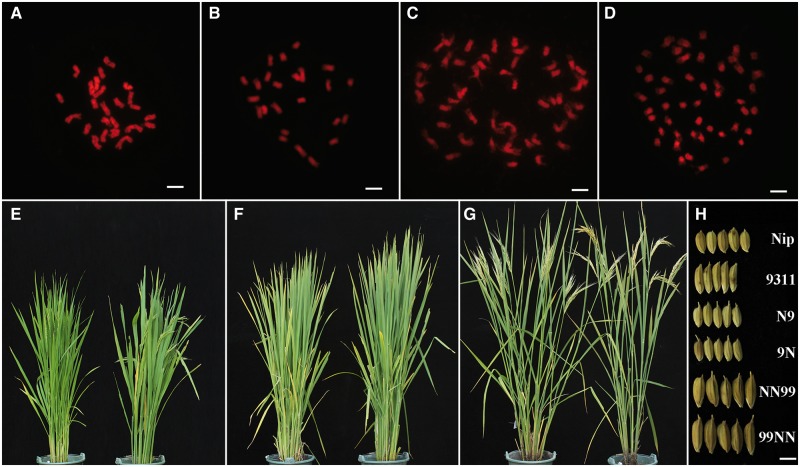Fig. 1.
Cytological and phenotypic characteristics of the two diploid parental genotypes, Nipponbare and 93-11, representing the two subspecies, japonica and indica, respectively, of Asian rice (Oryza sativa L.), their reciprocal F1 hybrids and S1 tetraploids. Somatic chromosome numbers of the two parental genotypes, Nipponbare (A) and 93-11 (B), and the reciprocal tetraploids (C and D) are shown, which are 2n = 24 and 48, respectively. (E–G) Overall morphology of mature plants of the parental genotypes, Nipponbare (E, left) and 93-11 (E, right), their reciprocal F1 hybrids, N9 (F, left) and 9N (F, right), and the reciprocal tetraploids, NN99 (G, left) and 99NN (G, right). (H) Typical grain morphology of parents, hybrids, and tetraploids. Scale bars in (A–D) are 5 μm and in H is 0.5 cm.

